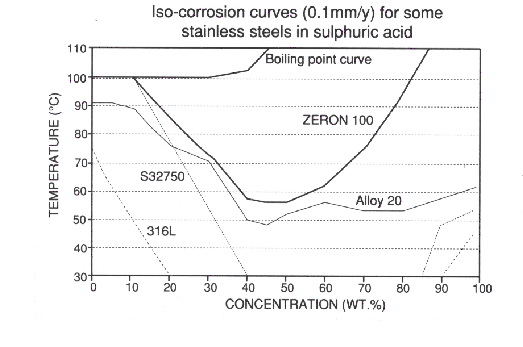|
||
| Sulphuric Acid on the WebTM | Technical Manual | DKL Engineering, Inc. |
Knowledge for the
Sulphuric Acid Industry
![]()
Sulphuric Acid on the Web
Introduction
General
Equipment Suppliers
Contractor
Instrumentation
Industry News
Maintenance
Acid
Traders
Organizations
Fabricators
Conferences
Used
Plants
Intellectual
Propoerty
Acid
Plant Database
Market
Information
Library
Technical Manual
Introduction
General
Definitions
Instrumentation
Plant Safety
Metallurgial
Processes
Metallurgical
Sulphur Burning
Acid Regeneration
Lead Chamber
Technology
Gas Cleaning
Contact
Strong Acid
Acid Storage
Loading/Unloading
Transportation
Sulphur
Systems
Liquid SO2
Boiler Feed Water
Steam Systems
Cooling Water
Effluent Treatment
Utilities
Construction
Maintenance
Inspection
Analytical Procedures
Materials of Construction
Corrosion
Properties
Vendor Data
DKL Engineering, Inc.
Handbook of Sulphuric Acid Manufacturing
Order
Form
Preface
Contents
Feedback
Sulphuric Acid
Decolourization
Order Form
Preface
Table of Contents
Process Engineering Data Sheets - PEDS
Order
Form
Table of Contents
Introduction
Bibliography of Sulphuric Acid Technology
Order Form
Preface
Contents
Materials of Construction -
Metals - Alloy 20
December 12, 2001
|
Introduction Chemical Composition Corrosion Resistance Designations Specifications Physical Properties Mechanical Properties Fabrication |
Associated Links |
Alloy 20 is a highly alloyed iron-base nickel-chromium-molybdenum stainless steel developed primarily for use in the sulphuric acid related processes. Besides sulphuric acid related processes, some typical corrosion resistant applications for the alloy include chemical, pharmaceutical, food, plastics, synthetic fibres, pickling and FGD systems plus many others.
The high nickel content combined with chromium, molybdenum, and copper gives the alloy good resistance to pitting and chloride-ion stress-corrosion cracking. The copper content combined with other elements gives the alloy excellent resistance to sulphuric acid corrosion under a wide variety of conditions. The addition of columbium stabilizes the heat affected zone carbides so the alloy can be used in the as-welded condition. Alloy 20 has good mechanical properties and is easily fabricated.
Chemical Composition (wt% typical)
| Nickel | Ni |
32.5 - 35.0 |
| Chromium | Cr |
19.0 - 21.0 |
| Molybdenum | Mo |
2.0 - 3.0 |
| Iron | Fe |
Balance |
| Carbon | C |
0.06 Max |
| Columbium + Tantalum | Cb + Ta |
8 x C or 1.00 Max |
| Copper | Cu |
3.0 - 4.0 |

UNS N08020
Alternate
Names: Carpenter 20Cb3
| AISI | 664 |
| ASTM | B366, B462 (Forging - Open Die),
B463, B464, B468, B471, B473, B474, B475, B729 |
| DIN | 2.4660 |
| Density | 8083 kg/m³ (504.6 lb/ft³) | |
| Specific Heat | 32-212°F | 0.12 Btu/lb/Deg°F |
| Electrical Resistivity | 68°F | 651 microhm-cm |
| Poissons Ratio |
0.31 | |
| Magnetic Permeability |
1.002 | |
| Modulus of Elasticity Tension | 28 |
| Ultimate Tensile Strength | 683 MPa (99,000 psi) |
| Elongation in 50.8 mm (2 in.) | 35% |
| Yield Strength (0.2% offset) | 414 MPa (60,000 psi) |
| Hardness | 148 HV |
To follow